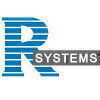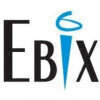
i
Mobileum
Filter interviews by
Mobileum Interview Questions and Answers
26 Interview questions
I follow a structured approach to document updates, ensuring clarity, accuracy, and consistency throughout the process.
Identify the scope of the update: Determine what has changed and why it matters.
Gather relevant information: Collaborate with subject matter experts to collect accurate details.
Use version control: Maintain a history of changes to track updates over time.
Update existing documentation: Revise relat...
DDLC stands for Document Development Life Cycle, outlining the stages of document creation and management.
1. Planning: Define the purpose and audience of the document. Example: A user manual for software.
2. Analysis: Gather requirements and research content. Example: Interviewing subject matter experts.
3. Design: Create an outline and structure for the document. Example: Deciding on sections for a technical report...
I have experience with various documentation tools that enhance technical writing efficiency and collaboration.
Microsoft Word: Used for creating detailed user manuals and reports.
MadCap Flare: Experienced in developing online help systems and responsive content.
Adobe FrameMaker: Utilized for complex document layouts and publishing.
Confluence: Collaborated on project documentation and knowledge bases.
Markdown: Empl...
Spark Framework is a simple and lightweight Java web framework for creating web applications.
Provides a simple and expressive syntax for creating web applications
Supports RESTful routing
Integrates easily with other Java frameworks like Spring and Hibernate
Various aspects of big data in my work include data collection, storage, processing, analysis, and visualization.
Data collection from various sources such as sensors, social media, and IoT devices
Storage in distributed systems like Hadoop or cloud storage solutions
Processing using technologies like MapReduce, Spark, or Flink
Analysis to extract insights and patterns from large datasets
Visualization to present the f...
I have worked with technologies such as Selenium, JUnit, TestNG, Jenkins, and Git.
Selenium for automated testing of web applications
JUnit and TestNG for writing and executing test cases
Jenkins for continuous integration and continuous deployment
Git for version control and collaboration
Telco security involves protecting telecommunications networks and data from cyber threats. It includes protocols like SSL, IPSec, and VPN.
Telco security focuses on securing telecommunications networks and data from cyber attacks
Protocols like SSL (Secure Sockets Layer), IPSec (Internet Protocol Security), and VPN (Virtual Private Network) are commonly used in telco security
Encryption and authentication are key co...
No, a circular loop is not present in a linked list.
A linked list does not have a circular loop by default.
If a linked list has a circular loop, it is considered a circular linked list.
Circular linked lists can be detected using Floyd's Cycle Detection Algorithm.
Find two numbers in an array that add up to a specific target value.
Use a hashmap to store the difference between the target value and each element in the array.
Iterate through the array and check if the current element's complement exists in the hashmap.
Return the indices of the two numbers that add up to the target value.
Check if parentheses in a string are balanced using a stack data structure.
Use a stack to keep track of opening parentheses.
For each character, push '(' onto the stack.
For each ')', pop from the stack and check if it matches.
If the stack is empty at the end, parentheses are balanced.
Example: '(()())' is balanced, but '(()' is not.
Mobileum Interview Experiences
38 interviews found
I applied via Referral and was interviewed in Jun 2024. There were 4 interview rounds.
(1 Question)
- Q1. Coding with design fundamentals on BST and DP
(2 Questions)
- Q1. Coding test with BST, DP
- Q2. LLD, HLD on telecom. SOLID principles, Design patterns, System design
(1 Question)
- Q1. One on one round with Architect and Manager. What do we know about SIP, SS7, Diameter.
(1 Question)
- Q1. Usual HR questions
Interview Preparation Tips
- Dynamic programing
- Binary Search Tree
- Kafka
- Rabbitmq
- Java
- C++
- JUnit
If you get the offer letter, please do not join this company.
Not very considerate people, though the policies are there. No WLB, politics, poor product and project management. Architects know the stuff but they don't have the documents about the products, no KT.
Again please seriously take this advice, if you get one offer, please do not join the company.
I applied via Referral
Java internals, coding questions 2sum
(2 Questions)
- Q1. Hld of your previous project
- Ans.
Developed a web-based project management tool for tracking tasks and deadlines.
Used React.js for front-end development
Implemented RESTful APIs for backend using Node.js and Express
Utilized MongoDB for database storage
Incorporated authentication and authorization features for user security
- Q2. Question related to self build projects
(2 Questions)
- Q1. Salary negotiation
- Q2. Location constrain if any
- Ans.
Open to relocation for the right opportunity
Willing to relocate for the right job opportunity
Flexible with location for the right role
Open to considering different locations for the right position
(2 Questions)
- Q1. Backend Questions regarding
- Q2. UI Questions regarding Angular
Interview Preparation Tips
(1 Question)
- Q1. Core and Advance concepts of Java
(1 Question)
- Q1. Mainly on mutltithrerading concepts and previous experience on projects.
(1 Question)
- Q1. About projects and scenarios based questions.
(1 Question)
- Q1. About Salary negotiation and final round
(1 Question)
- Q1. Explain Telco Security alongwith Protocols
- Ans.
Telco security involves protecting telecommunications networks and data from cyber threats. It includes protocols like SSL, IPSec, and VPN.
Telco security focuses on securing telecommunications networks and data from cyber attacks
Protocols like SSL (Secure Sockets Layer), IPSec (Internet Protocol Security), and VPN (Virtual Private Network) are commonly used in telco security
Encryption and authentication are key compone...
Skills evaluated in this interview
(1 Question)
- Q1. Copy constructor implementation it was based on
(1 Question)
- Q1. Binary search question on array
- Ans.
Binary search is an efficient algorithm for finding an item from a sorted array by repeatedly dividing the search interval in half.
1. Binary search requires a sorted array to function correctly.
2. It works by comparing the target value to the middle element of the array.
3. If the target value is less than the middle element, search the left half; if greater, search the right half.
4. Repeat the process until the target ...
(1 Question)
- Q1. Experience and expectations on salary
- Ans.
I am looking for a competitive salary that reflects my skills and experience in software development.
Based on my research, the average salary for a software developer in this region is between $80,000 and $100,000.
I have over 5 years of experience in full-stack development, which I believe justifies a salary towards the higher end of that range.
I am open to discussing the entire compensation package, including benefits...
Wrute a python function that recreve a linked list
I applied via Walk-in and was interviewed in Sep 2024. There was 1 interview round.
Sap in deatail to adress
Normal coding test on DSA and LLD.
I appeared for an interview in Oct 2024, where I was asked the following questions.
- Q1. What is DDLC and its process?
- Ans.
DDLC stands for Document Development Life Cycle, outlining the stages of document creation and management.
1. Planning: Define the purpose and audience of the document. Example: A user manual for software.
2. Analysis: Gather requirements and research content. Example: Interviewing subject matter experts.
3. Design: Create an outline and structure for the document. Example: Deciding on sections for a technical report.
4. D...
- Q2. What approach do you follow when documenting updates?
- Ans.
I follow a structured approach to document updates, ensuring clarity, accuracy, and consistency throughout the process.
Identify the scope of the update: Determine what has changed and why it matters.
Gather relevant information: Collaborate with subject matter experts to collect accurate details.
Use version control: Maintain a history of changes to track updates over time.
Update existing documentation: Revise related do...
- Q3. What are the documentation tools you have hands on experience?
- Ans.
I have experience with various documentation tools that enhance technical writing efficiency and collaboration.
Microsoft Word: Used for creating detailed user manuals and reports.
MadCap Flare: Experienced in developing online help systems and responsive content.
Adobe FrameMaker: Utilized for complex document layouts and publishing.
Confluence: Collaborated on project documentation and knowledge bases.
Markdown: Employed ...
- Q4. What were your roles and responsibilities as a technical writer in previous organisation?
- Ans.
As a technical writer, I created and maintained documentation to support product development and user needs.
Developed user manuals and online help documentation for software applications, ensuring clarity and usability.
Collaborated with engineers and product managers to gather information and understand technical specifications.
Conducted interviews with subject matter experts to capture detailed processes and workflows...
Top trending discussions







Mobileum Interview FAQs
Some of the top questions asked at the Mobileum interview -
The duration of Mobileum interview process can vary, but typically it takes about less than 2 weeks to complete.
Tell us how to improve this page.
Mobileum Interviews By Designations
- Mobileum Senior Software Engineer Interview Questions
- Mobileum Technical Lead Interview Questions
- Mobileum Associate Software Engineer Interview Questions
- Mobileum Software Engineer Interview Questions
- Mobileum Software Developer Interview Questions
- Mobileum Integration Engineer Interview Questions
- Mobileum Business Analyst Interview Questions
- Mobileum Associate Engineer Interview Questions
- Show more
Interview Questions for Popular Designations
Overall Interview Experience Rating
based on 34 interview experiences
Difficulty level
Duration
Interview Questions from Similar Companies
Mobileum Reviews and Ratings
based on 337 reviews
Rating in categories
15-20 Yrs
Not Disclosed
6-8 Yrs
Not Disclosed
|
Senior Software Engineer
234
salaries
| ₹12 L/yr - ₹21.2 L/yr |
|
Technical Lead
158
salaries
| ₹19.6 L/yr - ₹33.5 L/yr |
|
Software Engineer
143
salaries
| ₹9.1 L/yr - ₹16.8 L/yr |
|
Associate Software Engineer
98
salaries
| ₹6 L/yr - ₹16 L/yr |
|
Integration Engineer
60
salaries
| ₹6 L/yr - ₹10.6 L/yr |

Thomson Reuters

Oracle Cerner

Chetu

R Systems International
- Home >
- Interviews >
- Mobileum Interview Questions












